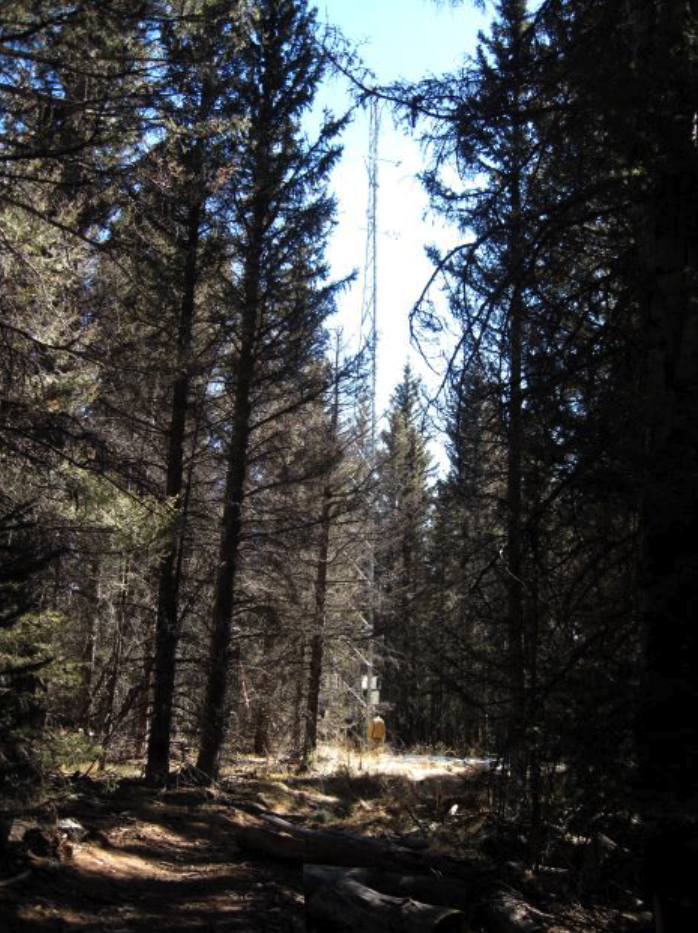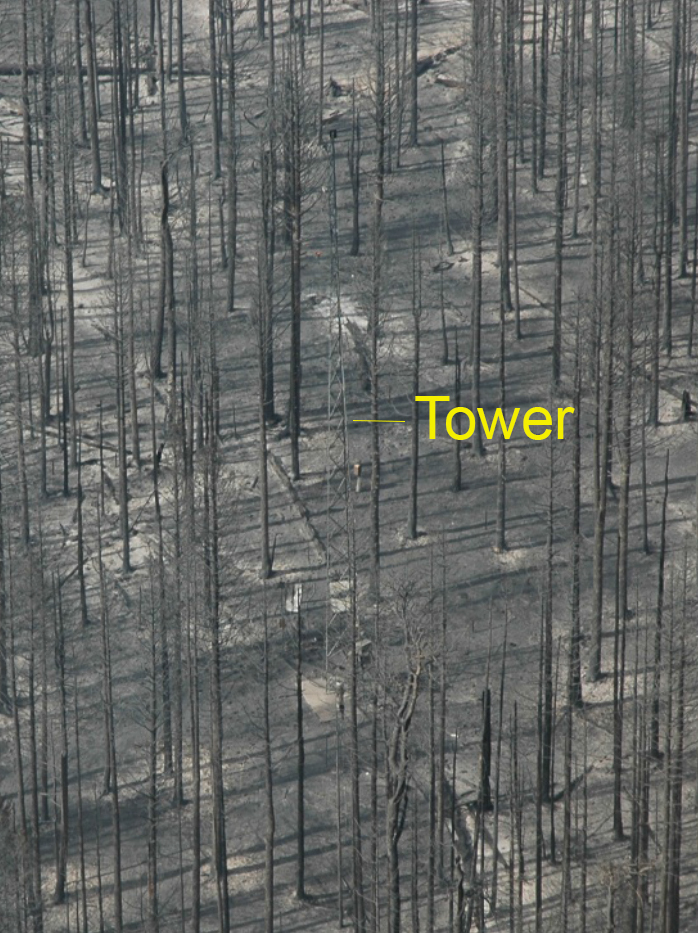
Credit: Photo taken by Kristen Honig on June 5, 2013 — at Valles Caldera Headquarters Historic District.
The Thompson Ridge Fire devastated the Valles Caldera National Preserve (May 31-July 2, 2013), where two AmeriFlux sites are located—one in a ponderosa pine forest (US-Vcp) and the other in a subalpine mixed conifer forest (US-Vcm, secondary core site), both established in 2006 (PI: Marcy Litvak, University of New Mexico). These are the two highest elevation sites in the New Mexico Elevation Gradient.
The fire burned so intensely through the subalpine site that all green vegetation and organic matter in the soil combusted immediately, leaving only dead boles and ash.
With the help of the AmeriFlux TechnicalQA/QC Team and existing resources, the burned site was rebuilt and restarted with minimal disruption. Some instrument/sensors were salvaged, some were lost to the fire. Our team assisted in buying new instrumentation and improved on the system that was previously in place by upgrading the sensors, communication equipment, and power system.
In our efforts to help PI Marcy Litvak achieve her goals, we attempted to strike a balance between offering services and advice (i.e., innovation, the state of the art), and supporting the ongoing activities and projects at this particular site (i.e., maintaining and valuing what is there). Story to be continued when we re-visit Marcy Litvak and get a new report on the ongoing progress of recovery. New tower to be installed August/September 2014.


Credits: Photo taken by Marcy Litvak, US-Vcm site principal investigator.
Tower before and after the Thompson Ridge Fire, June 2013.
